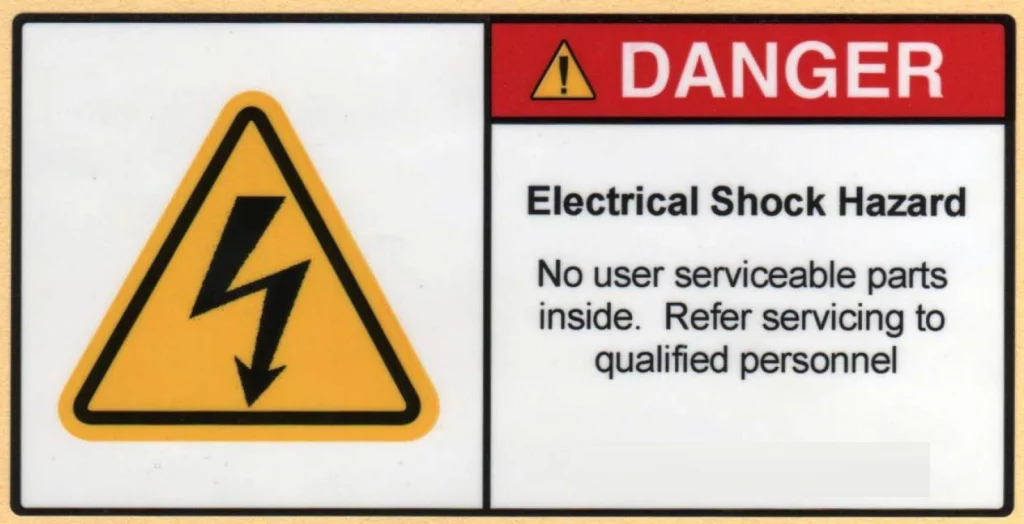Required Protective Clothing
The Philippine Electrical Code 2017 Edition requires switchboards, panelboards, motor control centers, and other equipment in locations other than dwelling units to be individually field marked with proper warning labels to raise the level of awareness of electrical arc-flash hazards and thereby decrease the number of accidents that result when personnel do not wear the proper type of protective clothing when working on energized equipment.

Philippine Electrical Code 2017
1.10.1.17 Arc-Flash Hazard Warning.
(A) General. Electrical equipment, such as switchboards, switchgear, panelboards, industrial control panels, meter socket enclosures, and motor control centers, that is in other than dwelling units and is likely to require examination, adjustment, servicing, or maintenance while energized, shall be field or factory marked to warn qualified persons of potential electric arc flash hazards. The marking shall meet the requirements in 1.10.1.21(B) and shall be located so as to be clearly visible to qualified persons before examination, adjustment, servicing, or maintenance of the equipment.
(B) Service Equipment. In other than dwelling units, in addition to the requirements in (A), a permanent label shall be field or factory applied to service equipment rated 1200 amps or more. The label shall meet the requirements of 1.10.1.21(B) and contain the following information:
(1) Nominal system voltage
(2) Available fault current at the service overcurrent protective devices
(3) The clearing time of service overcurrent protective devices based on the available fault current at the service equipment
(4) The date the label was applied

Exception: Service equipment labeling shall not be required if an arc flash label is applied in accordance with acceptable industry practice.
FPN No. 1: NFPA 70E -2015, Standard for Electrical Safety in the Workplace, provides guidance, such as determining the severity of potential exposure, planning safe work practices, arc flash labeling, and selecting personal protective equipment.
FPN No. 2: ANSI Z535.4-2011, Product Safety Signs and Labels, provides guidelines for the design of safety signs and labels for application to products.
FPN No. 3: Acceptable industry practices for equipment labeling are described in NFPA 70E -2015 Standard for Electrical Safety in the Workplace. This standard provides specific criteria for developing arc-flash labels for equipment that provides nominal system voltage, incident energy levels, arc-flash boundaries, minimum required levels of personal protective equipment, and so forth.
Working on Live Electrical Equipment
Accidents continue to happen when workers responsible for the installation or maintenance of electrical equipment do not turn off the power source before working on the electrical equipment. Working on electrical equipment that is energized is a major safety concern in the electrical industry. The main purpose of this requirement in the Philippine Electrical Code is to alert electrical contractors, electricians, facility owners and managers, and other concerned parties to the hazards when personnel is exposed to energized electrical conductors or circuit parts and emphasize the importance of turning off the power before working on electrical circuits. This section was revised from the 2009 edition to clarify that the requirement does not apply to equipment in "dwelling units". However, dwelling occupancies include multifamily dwellings, which include multiple dwelling units. A large multifamily dwelling could have the same electric service as a commercial building. The intent is to provide warnings to electricians working on these larger services.

